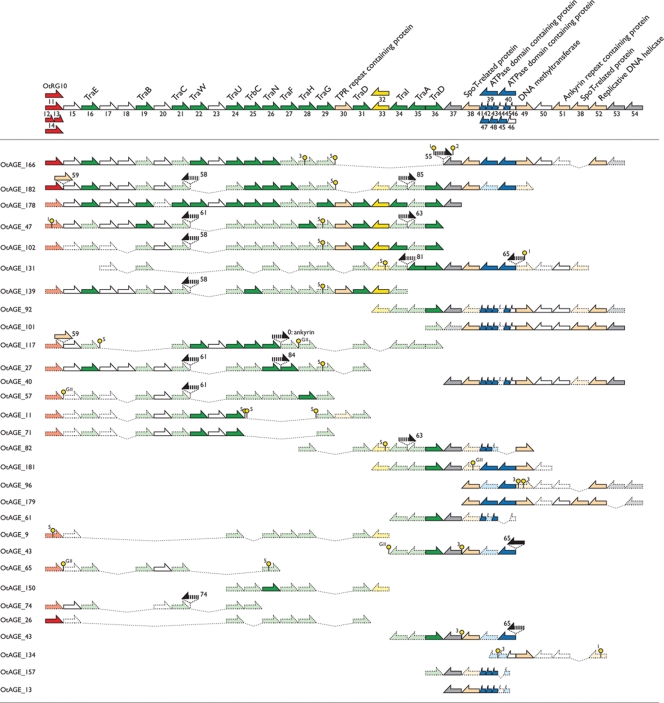Figure 2.
Gene organization of OtAGEs (O. tsutsugamushi amplified genetic elements). The gene organizations of the longest 30 OtAGEs identified in the O. tsutsugamushi genome are shown. The structure of the intact OtAGE that we deduced from the structures of these 30 OtAGEs is shown at the top. Arrows depicted by solid lines indicate intact genes and those depicted by dotted lines indicate degraded ones. Genes for conjugal transfer are depicted in green, integrase genes in red, genes for ATPase domain-containing proteins in blue, genes for other functions in light orange, genes for transposases in yellow, conserved hypothetical genes in white, O. tsutsugamushi-specific hypothetical genes whose gene products exhibited no significant sequence similarities to known protein sequences in gray, and genes that were probably trapped or inserted in OtAGEs in black. Four types of integrase genes and three types of gene cassettes encoding ATPase domain-containing proteins are present. Balloon marks indicate the insertion sites of IS elements (the ISOt number is labeled for each IS element). Deleted regions are indicated by broken dotted lines.

